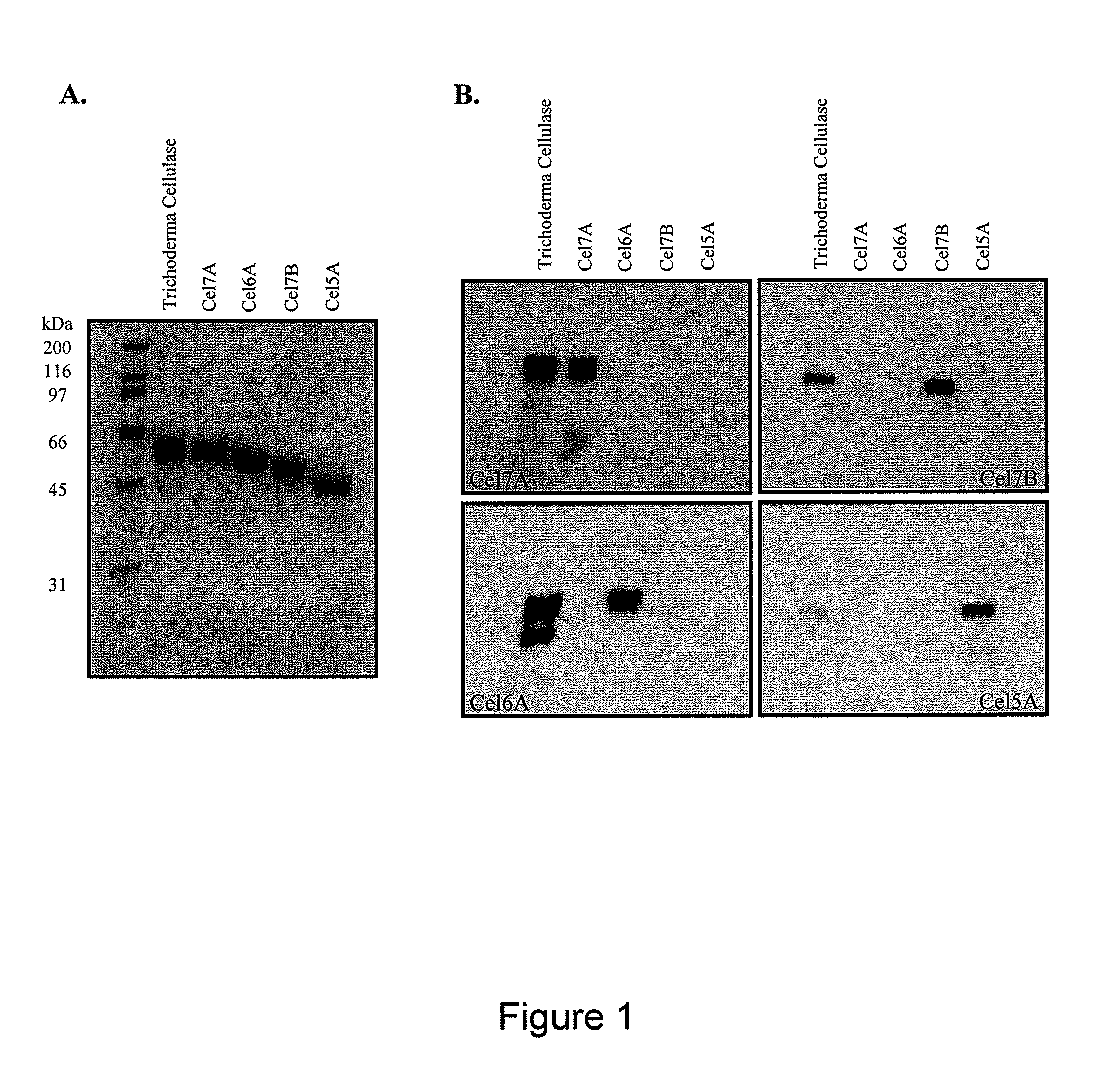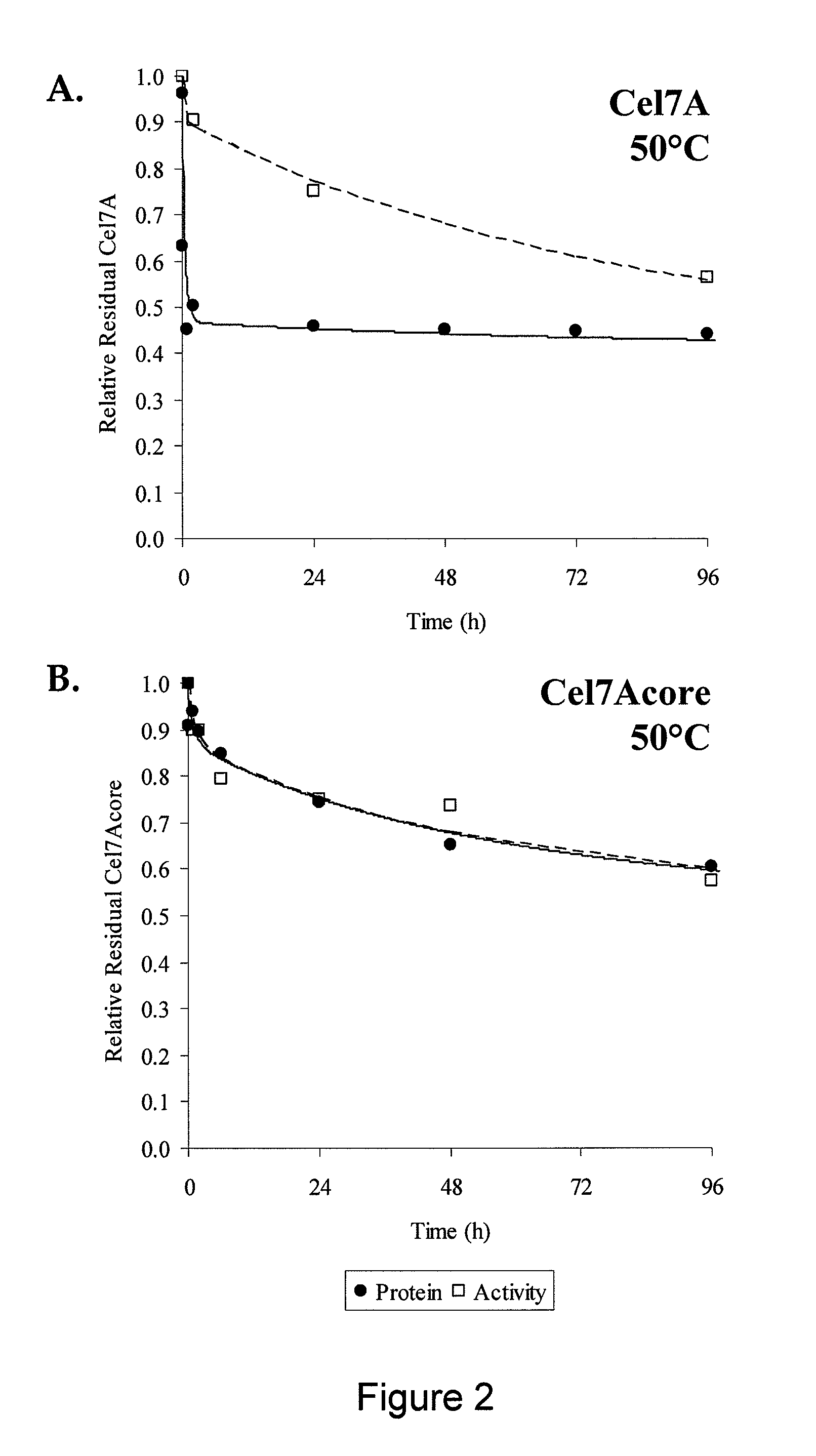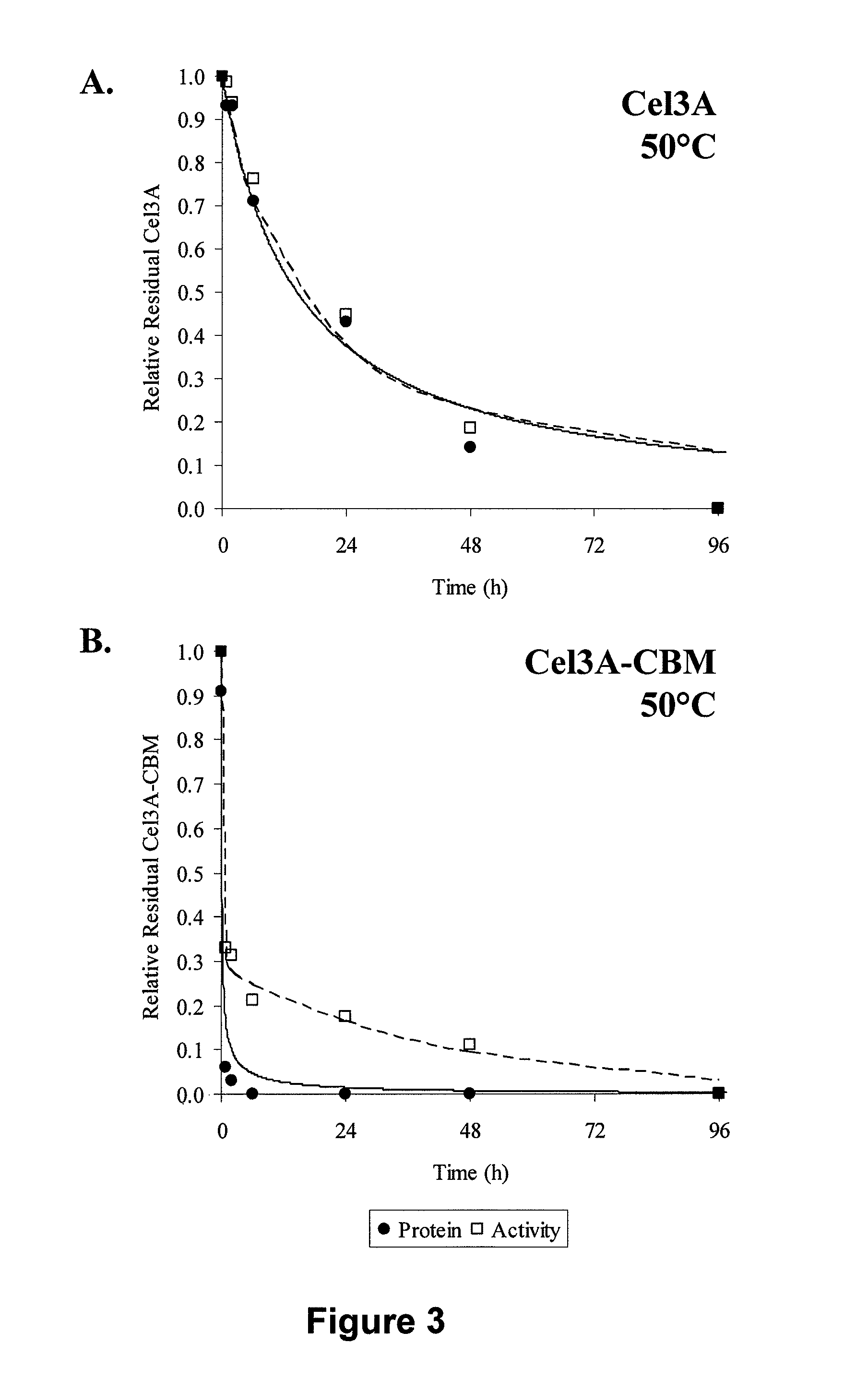Carbohydate binding modules with reduced binding to lignin
a technology of carbohydrate binding module and lignin, which is applied in the direction of biochemistry apparatus and processes, polypeptides with affinity tags, enzymes, etc., can solve the problems of major barriers to commercial viability, inefficient steps, and high cost, and achieve the effect of improving recovery
- Summary
- Abstract
- Description
- Claims
- Application Information
AI Technical Summary
Benefits of technology
Problems solved by technology
Method used
Image
Examples
example 1
Preparation of Trichoderma reesei Cel7A, Cel7A Catalytic Domain, Cel6A and Cel6A Catalytic Domains
[0127]A strain of Trichoderma reesei was grown in submerged liquid fermentation under conditions that induce cellulase production as known to those skilled in the art. The crude mixture of Trichoderma proteins was secreted by the cells into the fermentation broth. The fungal cells were removed from the fermentation broth by filtration across a glass microfiber filter containing a Harborlite filter bed. Cel7A and Cel6A were separated from the crude filtrate by anion exchange chromatography using a DEAE-Sepharose column as described by Bhikhabhai et al. (1984). Cel7A and Cel6A were then further purified by p-aminophenyl-1-thio-β-D-cellobioside affinity chromatography as reported by Piyachomkwan et al. (1997, 1998). These components were concentrated and buffer exchanged into 50 mM sodium citrate, pH 5.0 using a stirred ultrafiltration cell (Amicon) and a 10 kDa NMWL polyethersulfone membr...
example 2
Preparation of Cel3A and Cel3A-CBM
[0132]Strains of Trichoderma reesei that over-express Cel3A (SEQ ID NO: 100) or Cel3A-CBM (SEQ ID NO: 101), as described in U.S. Publication No. 2009 / 0209009A1 were grown in submerged liquid fermentations under conditions that induce cellulase production as known to those skilled in the art. The crude mixtures of Trichoderma proteins were secreted by the cells into the fermentation broth. The fungal cells were removed from the fermentation broth by filtration across a glass microfiber filter containing a Harborlite filter bed. Cel3A and Cel3A-CBM were separated from their respective culture filtrates by anion exchange and cation exchange chromatography.
[0133]A column of DEAE-Sepharose was equilibrated in 5 mM sodium phosphate, pH 7.2. Trichoderma culture filtrate containing Cel3A or Cel3A-CBM was adjusted to pH 7.2 and applied to the column at 10 mL / min. The column was washed with 4 column volumes of the equilibration buffer and then bound protein w...
example 3
Preparation of Lignin
[0134]Wheat straw was pretreated using the methods described in U.S. Pat. No. 4,461,648. Following pretreatment, sodium benzoate was added at a concentration of 0.5% as a preservative. The pretreated material was then washed with six volumes of lukewarm (˜35° C.) tap water using a Buchner funnel and filter paper.
[0135]A sample of pretreated wheat straw (167 g wet wt; 30% solids; 60% cellulose) was added to 625 mL of 82% H2SO4 with stirring in a 1 L flask, then stoppered and incubated at 50° C. with shaking for 4 hours. The remaining solids were filtered to dampness using a Buchner funnel and a glass fiber filter, resuspended in 1 L of water and adjusted to pH 4.5 with NaOH. The solids were filtered and washed with ˜8 L water. The solids, which were determined to contain less than 1% (dry wt) cellulose, are referred to herein as “lignin”.
[0136]Bovine serum albumin (BSA) treatment of lignin was performed by incubating equal amounts (w / w) of lignin and BSA, at a co...
PUM
| Property | Measurement | Unit |
|---|---|---|
| temperature | aaaaa | aaaaa |
| temperature | aaaaa | aaaaa |
| temperature | aaaaa | aaaaa |
Abstract
Description
Claims
Application Information
 Login to View More
Login to View More - R&D
- Intellectual Property
- Life Sciences
- Materials
- Tech Scout
- Unparalleled Data Quality
- Higher Quality Content
- 60% Fewer Hallucinations
Browse by: Latest US Patents, China's latest patents, Technical Efficacy Thesaurus, Application Domain, Technology Topic, Popular Technical Reports.
© 2025 PatSnap. All rights reserved.Legal|Privacy policy|Modern Slavery Act Transparency Statement|Sitemap|About US| Contact US: help@patsnap.com



